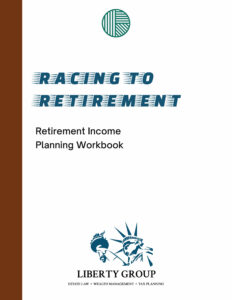From Pension Plans to 401(k)s: The Changing Landscape of Retirement Planning
In the past, it was common for individuals to work for a single company for their entire career, often relying on a pension to fund their retirement. But as the world of work and financial planning has evolved, so too has the responsibility of saving for retirement. Today, with pensions becoming less common, the responsibility for building a retirement nest egg now falls more heavily on employees, requiring them to take greater ownership of their savings and financial planning.
The Shift from Pensions to Individual Responsibility
In years past, pensions were the backbone of retirement planning for many workers. These plans allowed employees to receive a defined income based on years of service and salary without contributing their own earnings. The employer shouldered the entire burden of saving and investing, leaving employees to enjoy a “free ride” to retirement. Unfortunately, corporate scandals and economic challenges in the 1980s drastically reduced the availability of these plans, and employers began shifting the responsibility to employees through defined contribution plans, such as 401(k)s.
This shift not only changed the retirement landscape but also placed a greater burden on individuals to manage their own retirement funds. Pension plans are now much less common in the private sector; according to U.S. Bureau of Labor Statistics’ National Compensation Survey fewer than 5% of private companies offer pension plans. In contrast, defined contribution plans, like the 401(k), have become the norm, requiring employees to take charge of their retirement savings.
What Happened to Pension Plans?
Traditional pension plans are still available in some sectors, particularly in government organizations. These plans allow employees to receive a guaranteed income during retirement, funded entirely by the employer. However, vesting requirements and other rules often limit access to the funds until the employee reaches a specific age, typically between fifty-five and sixty-five. While these plans are attractive because they grow tax-deferred and provide predictable income, their availability has significantly diminished.
In recent years, cash balance plans have also emerged, offering more flexibility than traditional pensions. With these plans, employers contribute a percentage of an employee’s salary to an account, which grows at a fixed interest rate. While cash balance plans generally offer lower retirement payouts than pensions, they provide more flexibility in terms of management and early withdrawal options.
The Rise of the 401(k)
Today, defined contribution plans such as the 401(k) have largely replaced pensions in the private sector. These plans allow employees to contribute a portion of their salary, pre-tax, and invest it in various options like stocks, mutual funds, and bonds. Some employers offer to match employee contributions, providing an added incentive to contribute.
The key difference between 401(k) plans and pensions is that the responsibility for saving falls squarely on the employee’s shoulders. While this creates more flexibility in how the money is managed, it also adds complexity. Choosing the right investment strategy, keeping up with market changes, and regularly adjusting contributions can feel overwhelming for many workers. However, maximizing contributions—especially when employers offer matching funds—and carefully selecting investment options can result in substantial long-term growth.
Managing Your 401(k) for Retirement Success
One of the most important aspects of managing a 401(k) is making sure you’re contributing regularly and taking advantage of any employer match. In 2024, you can contribute up to $23,000 if you’re under fifty and an additional $7,500 if you’re 50 or older. The contribution limit will raise to $23,500 in 2025. These contributions are tax-deferred, allowing your money to grow over time without immediate tax implications.
However, early withdrawals can lead to steep penalties, so it’s crucial to avoid accessing these funds before you reach fifty-nine-and-a-half, unless specific exceptions apply.
For those who find managing their own 401(k) challenging, many employers now offer self-directed 401(k) options. This allows employees to work with an outside advisor to better tailor their investment strategy, ensuring it aligns with their specific retirement goals. This can be a valuable tool, especially for those who feel overwhelmed by the complexity of managing investments on their own.
Conclusion
As the landscape of retirement planning continues to evolve, understanding the differences between pension plans and 401(k)s is essential for making informed financial decisions. While pensions may still be available to some, the majority of workers today must rely on 401(k)s and other defined contribution plans. By regularly contributing, selecting appropriate investment options, and seeking advice when needed, you can develop a retirement strategy that fits your long-term goals.

